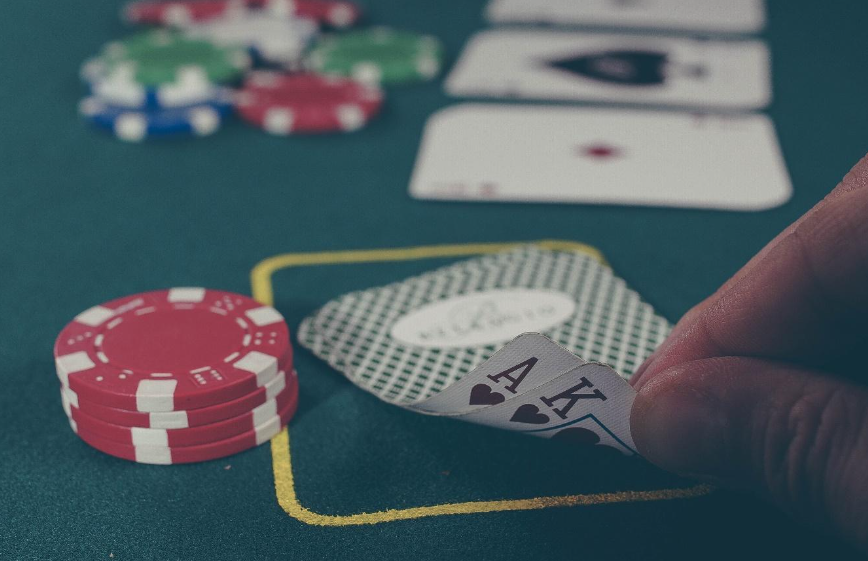
When it comes to mastering the art of poker, it’s not just about holding a royal flush or having a perfect poker face. It’s about understanding the principles and strategies that underlie the game. While poker might seem like a game of luck, there’s a lot more to it than meets the eye.
In this article, we’re going to dive into the world of poker and explore the principles and strategies that can help you become a formidable player. We won’t bore you with complicated jargon or overly technical terms – instead, we’ll keep it plain and simple, just like a friendly game with friends.
Today, it’s become very convenient to play a hand of poker. Anyone can play today in the comfort of their home – all you’re going to need is an internet connection! So, it’s only natural that we try and solve the questions you might have as a beginner, to improve your chances and help you play better.
That’s why you’ll find this guide full of practical advice and actionable intelligence.
Table of Contents
Starting Strong: The Power of a Good Hand
In online poker for real money, it’s not just about getting a hand; it’s about getting a good hand – one that can kick-start your journey to success. Pocket aces, with their 4.7% chance of being dealt, are the unicorn of online poker, setting you up perfectly with the strongest starting hand possible. With the optimal hand, you become a heavy favorite over any other single pair or unsuited cards your opponents hold. That is, you’re poised to build a big pot, knock out players, and stack up chips.
But here’s the thing: good hands don’t come around every other round, and you don’t need them to win. Sometimes, a well-timed bluff can be your secret weapon, but we’ll get to that later.
Now, when we say a “good hand,” we’re talking about strong combinations like pairs, high cards, and suited connectors. But don’t get too carried away hoping for a royal flush; those are like spotting a unicorn.
The key is to recognize when you have a decent hand and when it’s best to fold, because patience is indeed a virtue in poker. We strongly recommend Tight Poker’s guide on folding to learn exactly when to fold.
Reading Your Opponents: The Bluff and Body Language
Let’s talk about the art of bluffing. You don’t need a Ph.D. in psychology to bluff successfully. All it takes is a poker face and a sprinkle of confidence. When you raise your bets, you’re telling a story.
Your opponents are like detectives, trying to figure out if you’re telling the truth or spinning a tale as tall as a skyscraper.
Bluffing is like convincing your friends that you actually like their cooking when you’re not sure what’s in that casserole.
It’s all about reading your opponents and their body language. Do they seem anxious, or are they as cool as a cucumber? Their twitching eyebrows or the way they shift in their seats can reveal more than you’d think.
Psychology Today has some great pieces of advice in their article on the psychology of bluffing. Make sure you read through it and apply some of the knowledge in your next game! Just remember, even the best detectives can be fooled by a well-timed bluff.
The Game Within the Game: Position and Betting
Poker isn’t just about the cards; it’s about where you’re sitting at the table. Your position can be your secret weapon or your Achilles’ heel. Imagine it like a game of musical chairs, but instead of chairs, you’re fighting for an advantageous spot in the betting order.
The earlier you act in a hand, the less information you have about your opponents’ intentions.
Being in a later position allows you to see what everyone else does before making your move, giving you a sneak peek into their plans. It’s like watching a movie trailer before deciding if you want to see the whole film.
Betting isn’t about tossing chips into the pot like it’s a casino party. It’s about carefully sizing your bets to keep your opponents guessing while maximizing your potential winnings.
Sometimes, it’s okay to throw in a small bet, and other times, you might want to go big. It’s all part of the game within the game.
Managing Your Chips: Bankroll and Risk
In poker, it’s not just about how many chips you’ve got; it’s about how wisely you use them. It’s like having a wallet full of cash at a mall – you want to enjoy the spree without going broke. This is where your bankroll management skills come into play.
Don’t be tempted to go all-in every time you get a good hand. Sure, it’s exhilarating when you win a huge pot, but going all-in without a backup plan can leave you empty-handed faster than you can say “pocket rockets.”
Instead, think of your chips as your safety net. Set limits, know when to walk away, and don’t risk more than you’re willing to lose. It’s not rocket science like trying to learn how to mitigate business risk, but it’s also not child’s play.
Knowing the exact risk and when or how to avoid it is instrumental to a good game of poker and long-term success (basically, winning more often than losing).
Remember, poker is a marathon, not a sprint. Play smart and keep those chips stacked, and you’ll be in the game for the long haul.
Wrapping Up
Success isn’t solely measured by the cards you hold, but by the principles and strategies you employ. It’s about recognizing a good hand, reading your fellow players, and mastering the balance between risk and reward.
So, as you venture into the thrilling world of poker, remember that it’s not about being overly professional or perfect. It’s about having fun, learning from your experiences, and improving your game one hand at a time.



